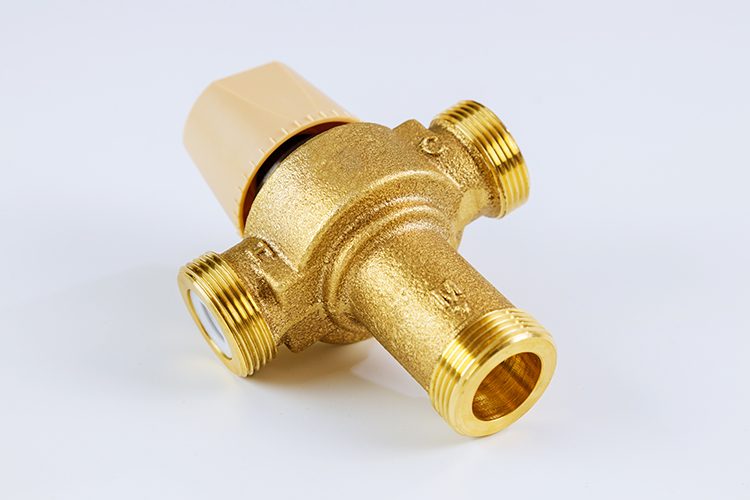Commissioning and Troubleshooting DHW Systems, Part 2
This month, we discuss how temperature-actuated mixing valves help prevent scalding issues.

Shower Usage Temperatures and Maximum Temp/Time to Burn Injuries
• Gang shower temperatures. Showering is typically done in a temperature range of 100 F to 108 F; showering temperatures vary from person to person based on the bather’s body temperature, skin thickness and preference. The codes have a 120 F maximum outlet temperature from shower or tub-shower fittings.
Many institutional facilities such as jails, prisons, hospitals and schools set their gang shower mixing valves at temperatures between 100 F to 105 F to supply an average of 102 F tempered water for these applications using single-pipe on/off or push-button metering showers without a user temperature adjustment to eliminate the risk of scalding.
These institutional showers should be using a gang shower mixing valve conforming to ASSE 1069, Performance Requirements for Automatic Temperature Control Mixing Valves, and the temperature should be checked daily.
• Tub-shower limit-stop temperature setting of 110 F. When the tub/shower valve maximum temperature limit stops are set at 110 F, it takes 3.6 hours for an adult to receive a second-degree irreversible burn injury with scarring. It takes 2.5 hours for a child to receive a second-degree burn.
This gives ample time for a person or child to cry or call out for help or recover from a slip and fall and get out of harm’s way. Scald risk is very low.
• Tub-shower limit-stop temperature setting of 115 F. When tub/shower valve limit stops are set at 115 F, it takes 30 minutes for an adult to receive a second-degree irreversible burn injury with scarring; it takes 11 minutes for a child to receive a second-degree burn.
This gives a moderate, yet manageable, amount of time for a person or child to cry or call out for help or recover from a slip and fall and get out of harm’s way. Scald risk is low.
• Tub-shower limit-stop temperature setting of 120 F. When tub/shower valve limit stops are set at 120 F, it takes 4.8 minutes for an adult to receive a second-degree irreversible burn injury with scarring and 1.2 minutes (72 seconds) for a child to receive the same injury.
This gives a minimum, yet code-compliant, amount of time for a person or child to cry or call out for help and get out of harm’s way. Scald risk is moderate but code-compliant. Institutional facilities should set limit stops to lower temperatures than the code maximum of 120 F to minimize or eliminate scald burn risk.
• Tub-shower limit-stop temperature setting of 130 F. When the tub/shower valve maximum temperature limit stops are set above 120 F, it is a code violation. If the maximum temperature limit stops are set to limit the maximum temperature to 130 F, it takes 18 seconds for an adult and 4 seconds for a child to receive a second-degree irreversible burn injury with scarring.
This is a dangerous temperature. Most code committees and standard committees that I have served on that studied the Moritz & Henriques burn studies have agreed that 120 F is the maximum safe hot water temperature for tub/shower valve maximum temperature limit stop settings to allow time for a bather to get out of harm’s way. At temperatures above 120 F, the scald risk is very high.





